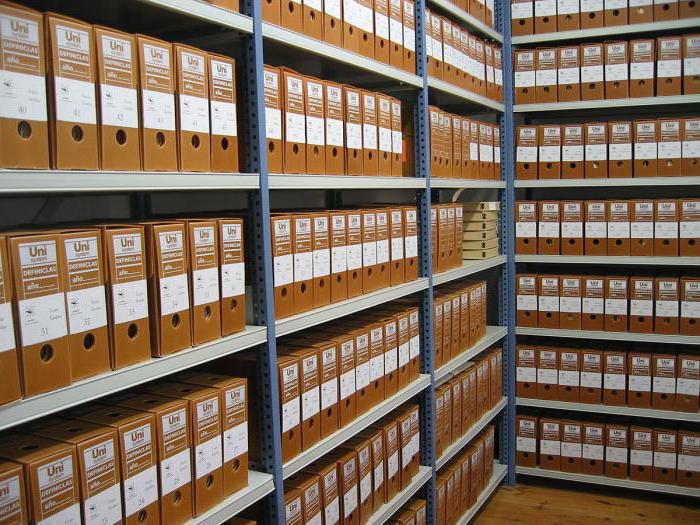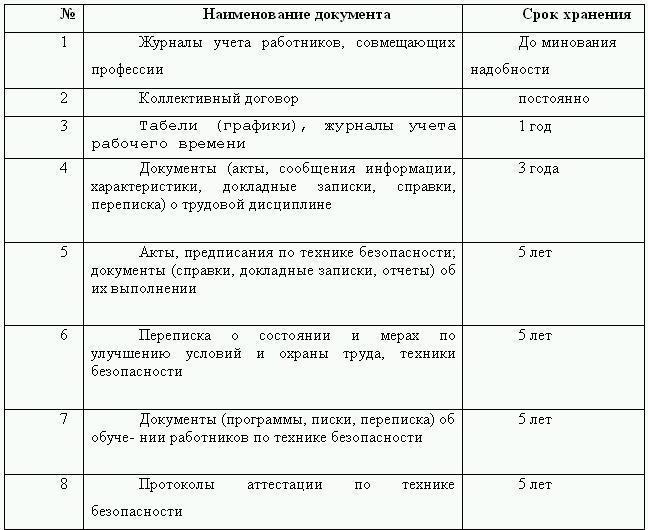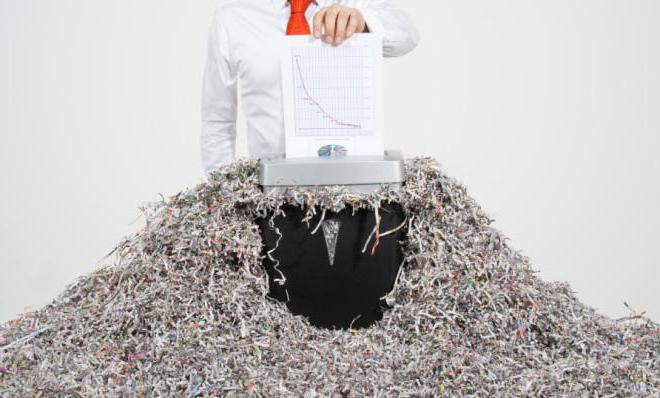During the activities of any enterprise, a large number of documents appear that must be stored for a certain period of time. In our article we want to talk about how the operational storage of documents and their destruction is carried out.
What is online storage?
Absolutely all papers created or received in the course of the enterprise are subject to clear systematization and thorough processing. So that in the future you can reuse them, you must properly organize their safety, providing quick access to any of them. In fact, the operational storage of documents is the preservation of papers in an organization or structural unit until they are destroyed or transferred to the organization’s archive.
Document retention periods
In any organization there are a variety of papers according to the degree of their value. Some have great economic or scientific value, others contain information that is necessary to solve specific problems, after which they lose their significance. Therefore, some of the papers must be properly systematized and stored, while others simply destroyed, according to certain rules.

The operational storage of documents of scientific or practical value has its own time frame. They depend on the degree of importance of their content.
Shelf life may be as follows:
- Permanent.
- Temporary (more than ten years).
- Temporary (no more than ten years).
It should be noted that the form of the papers does not affect the storage periods of documents in any way (the storage table is given by us in the article). It is no secret that at present most of the information is being processed electronically. Terms depend, first of all, on the content of the document itself.
Storage requirements
There are certain requirements for the operational storage of documents. For example, completed cases of temporary or permanent preservation should remain in the organizational units for several more years. After this period they are placed in the archive of the enterprise.
As long as the papers are in active use, they need proper design and maintenance. Operational storage of documents implies their formation according to certain specific groups, as well as the nomenclature specifics adopted by the organization.
To ensure a quick search of any papers, it is necessary to format the names of folders as informative as possible. As a drive, as a rule, folders are used, on the cover of which there should be a pocket for replaceable names of nomenclatures.
During online storage, the following information is indicated on the covers:
- The temporary period of the beginning and end of use.
- Total clean sheets in a folder.
- Indication of the shelf life of such securities.
- FULL NAME. artist, his contact phone number.
- Additional inscriptions may also be present (“for approval”, “for signature”, etc.)
Current storage is carried out in specially equipped cabinets (metal) or in a separate room, which is closed to access. Temporary issuance of securities should be carried out only by order of the management of the department, which concerns the documents. By the end of the day, the folder should return to its place - a safe cabinet.

At the end of the operational storage period, documents are assigned the status of “completed”. And only after this begins the procedure for their preparation for transfer to the archive.
Dates of storage of incoming documents
In any organization, incoming documents accumulate in the process of activity. They also have shelf life. In general, incoming correspondence refers to all the documentation that arrives at the enterprise. The storage periods of such papers are determined by the content. Incoming documents are recommended to be stored for at least three years. However, more important letters may last longer (for example, more than five years). Duration is determined by the degree of importance of the information in the papers. Therefore, the classification of such documents must take into account the importance of information. For example, letters from authorities should be highlighted in one folder, and correspondence with business partners in another. Such papers should be stored for at least five years.
Outbound retention periods
Outgoing documents, like any other in the enterprise, are subject to storage. Moreover, as in the case of incoming papers, they have certain terms, which depend on the degree of their importance.
It is advisable to systematize the documents and indicate the storage periods on each folder. Logically, outgoing documents should be divided into separate arrays: correspondence with suppliers, with customers, customers, government organizations, utilities, etc. The most important papers should be kept in operational storage for at least five years, and simpler ones - up to three years. Especially important letters can be stored for ten years. The grounds for such a long use must be fixed in a special instruction on the clerical work of the enterprise.
Document Logs
A document registration journal is available at any enterprise. Moreover, as a rule, separate registration journals for incoming and outgoing securities are allocated if the organization is active. So much more convenient to systematize all correspondence. Magazines are purchased and changed every year. Of course, at present, many prefer to keep a similar journal in electronic form. However, there must be a paper copy.

Requisites of documents are recorded in the journals, numbers are assigned to them, and dates are also indicated. Such registration of securities allows, if necessary, to find the right document. Magazines are kept for three years. At the end of this period, all documentation related to incoming and outgoing correspondence is destroyed, while drawing up an act.
Document Examination
As we said earlier, the duration of use and storage of papers in no case depends on the form (paper or electronic), only the content of the documents is of importance. To determine its significance, an examination is appointed. Its task is to find out which documents are of importance for production, science, the state, etc. For documents selected for operational storage, it is necessary to specify the period of time during which they may be needed. Therefore, the determination of the storage time is another task that is set before the examination. All papers before being sent for expert evaluation in preparation for transfer to the archive are formed into nomenclature affairs by certain structural divisions or the office management service.
Examination of value can be carried out at the enterprises themselves, the archives of organizations, as well as state archives.
In general, if we talk about serious management documents, the dates of their storage are predetermined at the time of their creation. The main reference and regulatory aids that affect storage periods are lists of documents indicating storage periods. They are used in the expert assessment of securities in municipal, state archives and at enterprises. And value, as we have said, is expressed in the shelf life.

The list of documents with storage periods is a systematic list of categories and types of securities containing regulatory information about the time of their storage.
The lists contain the storage periods of standard documents that are available in any organization. But specific papers reflecting certain functions of the enterprise may relate to departmental lists.
Document Archives
An archive of documents in an organization cannot exist on its own. The papers are stored in it for a certain time, after which they must be transferred to municipal archives or state ones. Federal law clearly defines the storage period for many securities in it. So, for example, documents on personnel, notarial papers, business books must be preserved for 75 years, scientific documentation - fifteen years.

In the event that the organization is liquidated for any reason, the archive of documents with a fixed shelf life, as well as personnel papers, must be transferred to the municipal (state) archive. Non-state enterprises in order to transfer documents must first conclude an agreement with the Archival Fund of the Russian Federation. If it was not concluded on time, then the archive should take for storage only paper on the personnel of the enterprise. The place of saving of the remaining documents should be chosen by the chairman of the liquidation commission.
How to destroy documents?
Archival documents that are stored at the enterprise can be eliminated if their storage periods have expired. Destruction of documents can be entrusted to a third-party organization, or you can perform it yourself. There are uniform rules by which this process is carried out. It is worth remembering that you can destroy only those documents that have expired storage periods that have lost their practical significance. It is possible to take any action with respect to securities only with expert judgment.
Destruction of documents is accompanied by the execution of the act.
Drawing up an act
Papers can be included in the act of destruction in the event that the storage period expired on January 1 of the year in which the document is drawn up. That is, if the case of 2014 and the storage period is five years, then it can be included in the act only in 2020.
In order to avoid further misunderstandings, all cases must be fully reviewed, making sure that all the papers in it have lost value. However, in practice, they often do otherwise. If documents lay on a shelf for five years and were never touched by them, then the rules are neglected. They simply flip through selectively cases to make sure that they really are no longer needed.

The act must contain information that is available on the cover of cases. Such painstaking work will seem unnecessary to those people who do not understand the intricacies of archival work. But actually it is not.
An act must certainly be signed by the person who conducted the expert assessment. Further, the document makes a note that the actions were agreed with the expert committee of the organization. Ultimately, the act must be approved by the head of the enterprise.
Only after following all the procedures can the organization destroy the cases listed in the act.
How to destroy business papers?
There are several ways to destroy documents. If the territory of the enterprise allows, then you can burn the paper yourself, observing fire safety. In addition, you can use the shredder documents. But this is a rather long process, this method is suitable for small volumes. In these cases, an act is drawn up in an arbitrary form, in which the fact of destruction is recorded.
Large volumes of cases intended for destruction, usually enterprises transfer for disposal or recycling to specialized organizations that deal with this.

The fact of the transfer must be recorded in the acceptance certificate. The document indicates the date, weight and number of cases. Experts recommend that an employee of the company be present at the destruction of papers to maintain confidentiality.